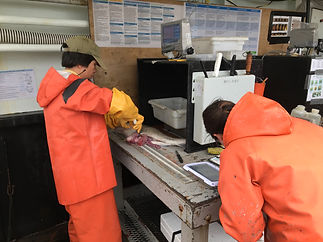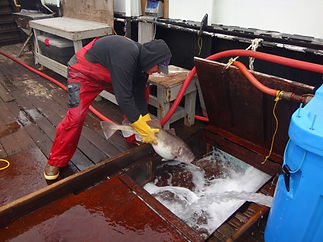
SCIENCE & RESEARCH
TAG RESEARCH
Where do Pacific cod go throughout the year?
FLC supports research to track fish using pop-up satellite archival tags. Watch a NOAA Fisheries presentation to learn more (Pacific Cod Tagging (PACT) in Alaskan Waters with Pop-up Satellite Archival Tags: Developing the PACT Team | NOAA Fisheries) or check out these additional resources:





NOAA SURVEYS
Regular NOAA groundfish surveys provide data fundamental to making informed, science-based decisions on stock assessments, the management of our fisheries and our ocean ecosystems. Learn more about data collected from these surveys:




BYCATCH MITIGATION
The freezer longline sector is one of the cleanest fisheries in the world, with very low bycatch incurred by our fleet. Our vessels use non-pelagic longline gear to harvest with hooks, catching one fish at a time. The cooperative fishing agreement between our members allows us to implement voluntary bycatch reduction measures to ensure the sustainability of our fishery and other species. We are a global leader in reducing bird takes by commercial fishing fleets. FLC partnered with Washington Sea Grant in the development of voluntary measures, including streamer lines that dramatically reduced bird takes by our fleet. Members contract with Sea State to monitor takes and provide weekly updates, including encounters with Short Tailed Albatross (STAL), an ESA protected species. In 2015, the U.S. FWS increased the allowed number of takes (from 4 to 6) of STAL by fishing vessels in the North Pacific, citing an increase in STAL population. Despite this, between 2015-20 there were only 2 reported STAL takes by our fleet.
Streamer Lines to Reduce Bird Bycatch in Longline Fisheries Flyer



